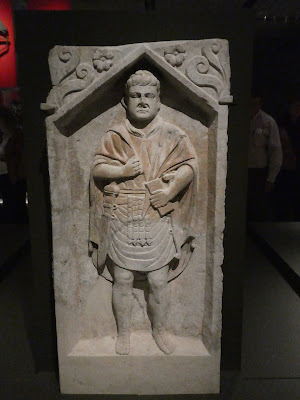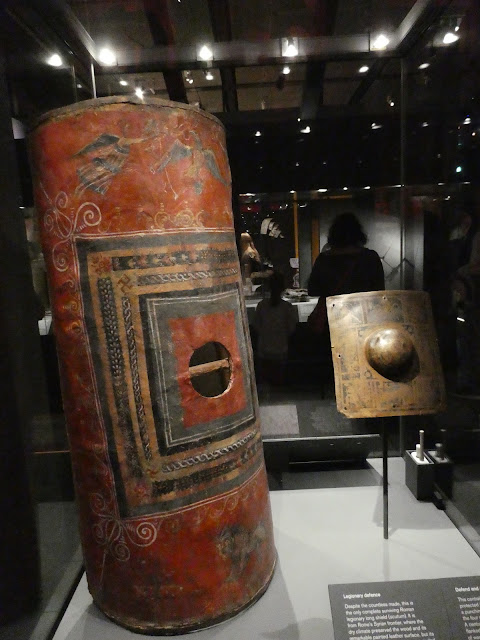I have, at last (almost) completed painting my Indian battaltion for the 'D-Day Dodgers' Italian Campaign 1943-45 project. So here, on parade for the camera on what looks suspiciously like a stopover in rural England before deployment, are the gallant men of the entirely imaginary 11/8th Punjab battalion:
They comprise (from the front ) the HQ company with Battalion commander, PIAT team, 2-inch mortar team and truck; three rifle companies each of 8 figures with a truck; a fourth company with 8 figures and 2 Bren carriers; and the Support Company with 6-pounder A/T gun, 3-inch mortar, Lloyd carrier and Bren carrier.
Keen readers may remember that I was unsure how to recruit the fourth company, having limited numbers of figures with Punjabi Muslim style turbans or British steel helmets - I am grateful to Neil from the excellent aufklarungsabteilung blog who suggested that I could consider a Sikh company in a Punjabi battalion. I had enough Sikh-turbaned figures to do that, and it seemed a nice idea, giving a bit more interesting variation in the battalion. So we now have 'A', 'B' and 'C' Companies of Punjabis, and 'D' Company of Sikhs. I'm quite pleased with them
As I said, they are 'almost' complete - if you look very closely at the back, you'll see that the 6-pounder crew are in need of a change of uniform colour and skin tone. So indeed not quite finished yet, but almost! Also the transport is 'from the pool' so to speak (specifically the vehicles bought recently from the collection of the late Eric Knowles), hence their carrier crews also look distinctly White British. So the next step is to provide some more appropriate crewmen - which should be simple enough.
If you'll excuse my 'impressionistic' painting style (as ever, button-counters should look away now), I'll risk a close-up :
hmmm... those HQ company bases may need a little work. You may notice that the only White British figure is the battalion commander - as far as I know, this is pretty much true to reality (note that this is a battalion for Rapid Fire Reloaded, in which one figure represents about 15 men). Anyway I am quite pleased with them overall, and hope they acquit themselves well when they finally get to the gaming table!
When painting them, I decided to be a little more adventurous than a very simple 'block-painting' style, and found some useful tips in Andy Singleton's book Painting Wargaming Figures: WW2 in the Desert
I liked this book, as it starts from the very basics and really assumes no prior knowledge of various painting techniques, hence great for beginners. He also has step-by-step instructions (with plenty of good photos) for painting figures at each of three levels of skill, which he calls 'Conscript' ( block colours and a little dry-brushing ) 'Regular' ( some dry-brush highlights, and shading to finish ) and 'Elite' ( using layering and spot-highlights ). My chaps are somewhere between Conscript and Regular, I think, and that will do nicely for me. We'll have to see what level they fight at..
This week has coincidentally provided some more Italian-related interest and events, as follows:
(1) a trip to the BFI ( National Film Theatre, as was ) in London for a showing of Roberto Rossellini's Rome, Open City , which I had shamefully never seen before (and I call myself a film fan?). Absolutely relevant to the 'D-Day Dodgers' period, this neo-realist classic depicts life in Rome under the Nazi occupation of 1943-1944, and the hazards of involvement in the political/violent resistance movements. It's famous for being filmed very close to the time it depicts, and as the program notes say it was 'made on the streets of the war-ravaged capital with stolen electricity and scraps of 35mm stock supposedly sourced on the black market'. It was first shown in September 1945, less than a year after the Allies liberated Rome, and only months after the German forces in Italy had surrendered. It struck me that the people of the areas where filming took place (and the allied troops in Rome) may have been pretty shocked if chancing across the filming, as tenement blocks were surrounded and 'residents'; rounded up by parties of SS troops in full uniform, distinctive helmets and fully armed! There must have been some delicate negotiations between the film-makers and the authorities, and the locals. It's a great film, well worth catching.
(2) Picked up at a neighbourhood 'give a book, take a book' box, A Walk In the Sun by Harry Brown, a slim novel recounting the experiences of a fictional US Army platoon landing on an un-named beachhead in Italy in 1943 or 1944, Harry Brown was a US Soldier, but not on the front-line - he was a writer for Yank magazine ('the army weekly') from 1942. He went on to be a film screenwriter, with Sands of Iwo Jima among his credits. I was pretty suprised to learn that this novel was published as early as 1944, as it is not in the least 'gung-ho' and does not paint a romantic picture of war, quite the opposite indeed. The platoon finds their commanding officer incapacitated before even reaching the beach, and then try to follow what little they know of their orders, given no contact with their parent unit. The writer must surely have interviewed real-front-line troops, and the story 'rings true' in its depiction of ordinary men in the extraordinary situations of war. I haven't finished it yet, so no plot spoilers, please!
(3) Last but not least, a different period but also Italy-based, I was lucky to take part in another of Jon Freitag's remote games, this time recreating the battle of Bassignana, 1745.
I'll give nothing away except Jon's picture of the initial deployments, trusting him to provide his usual excellent report of what was one of his usual excellent games, which came to quite a dramatic last-gasp conclusion!
I was privileged to play the 'Gallispans' C-in-C Mallebois, with a small brigade command too, while Chris 'Nundanket' and Dave 'St Cyr' took the Spanish and French wings, against Piedmontese and Austrians led by Mark 'Jolly Broom Man' and Tony 'MS Foy'. Many thanks to Jon and all concerned, as usual, for a great game!
Next, it must surely be time to actually try a game of Rapid Fire Reloaded : and next weekend there is the 'Broadside' show at Gillingham which I hope to attend. Plenty of material for future blogging, then. Until then, keep well, everyone.





























